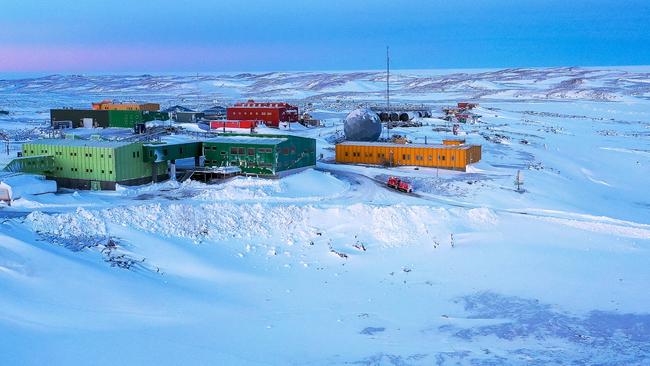Antarctic runway is good strategic move
Australia faces a loss of influence in Antarctica – potentially to China – if it fails to move ahead with plans for a year-round paved runway, a new report says.

Australia faces a loss of influence in Antarctica – potentially to China – if it fails to move ahead with plans for a year-round paved runway on the frozen continent, a new report says.
The site earmarked for the proposed 2.7km concrete runway, the ice-free Vestfold Hills, is adjacent to Australia’s Davis station but would be available for development by Beijing if Australia failed to proceed with the project, the Australian Strategic Policy Institute has warned.
The federal government is due to decide next year whether to commit funds to building Antarctica’s only paved runway, amid growing strategic competition over the continent for its resources and potential military uses.
The ASPI report team, led by University of Tasmania academic Jeffrey McGee, said moving ahead with the proposed aerodrome would strengthen the nation’s leadership role in Antarctica by making Australia the “the logistics country of choice” for international partners.
“Australia now has an opportunity to make a long-term investment that would bolster our leadership in Antarctica, where we claim 42 per cent of the continent,” the report said.
“Failing to proceed with the proposal would weaken our influence in Antarctica: it would allow other states to take advantage of the opportunity for logistical and scientific leadership in East Antarctica.”
A number of countries operate ice and gravel runways in Antarctica, but there are no reliable year-round runways for heavy airliners.
The Vestfold Hills site is one of the few ice-free areas suitable for a permanent aerodrome on the continent, making it “prime real estate”.
“If Australia decides to not proceed, there’d be no legal barrier to China – or any other Antarctic country – putting forward a new aerodrome proposal for the Vestfold Hills and doing it on rock.” the report said.
The cost of the runway would be “substantial”, given its anticipated 15-year construction period and the need to move equipment, building materials and personnel to the site.
The proposed runway has been criticised by some academics as being at odds with Australia’s strong history of environmental leadership in the region.
But ASPI argued the aerodrome could be constructed with care to meet Australia’s international environmental obligations under the Madrid Protocol.
It would also need to comply with Australia’s robust domestic laws governing the nation’s activities in Antarctica, including controls over the environmental impact of new infrastructure.
“Sadly, not all major Antarctic countries have equivalent legislation to govern their activities on the continent,” the report said.
“Another Antarctic state could make its own proposal for an aerodrome in the Vestfold Hills and might adopt a quicker, less costly approach to construction that carries increased environmental risk.”
The aerodrome would “future proof” the nation’s Antarctic science program for decades, the report said, acting as a distributing hub for personnel and equipment.
“Science is the currency of influence in Antarctica: investing in Antarctic logistics is the most effective way to advance our long-term Antarctic interests,” the report said.




To join the conversation, please log in. Don't have an account? Register
Join the conversation, you are commenting as Logout